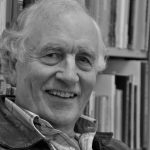
Poetry for Peace
Across countries and cultures over the centuries, the most powerful pleas for peace and the most significant protests against violence have come through poets. The Sydney Peace Foundation continues this tradition .
Emeritus Professor Stuart Rees, Founder of the Sydney Peace Foundation, has published three anthologies of poetry: The Jury’s Return (1992), Tell Me the Truth About War (2004) and A Will to Live (2014).
For years Stuart ran a post-graduate unit titled “Passion, Peace and Poetry” at the Centre for Peace and Conflict Studies, in which he integrated poetry with a study of the great non-violence leaders such as Gandhi and Martin Luther King.
A similar use of poetry to illustrate the theme of peace with justice runs through his book, Passion for Peace: Exercising Power Creatively (2003).
For an Anthology of Stuart Rees’ poetry, click here.
Here are Stuart’s latest poetic snapshots from his January 2012 trip to the occupied territories of the West Bank and Gaza:
Burj-al Barajneh
From alcoves of rusty fuse boxes,
a spaghetti tangle of wires
carry currents of danger
over prison-like alleys
peppered with puddles
and garbage desolate
beneath damp and peeling walls.
Women seeming dark in the darkness
appear hopeful when light
blinks unexpectedly
where the width widens
and unknowing children
say ‘welcome’, as if, as if
theirs is a mansion
and this cruel tragedy
had never been composed.
Men seeming exhausted
by the illusion
of their right to return,
plea for help to escape
the shackles of permanence
with which their jailers,
in alliance with something called
‘the international community’
have crafted the fantasy
that these people
should stay silent and invisible
because they do not exist.
Beirut, Lebanon, 23rd Jan 2012
Erez Crossing
A science fiction horror movie
peppered with frightening ingredients
would be difficult to watch
but can be found in this place.
Beyond signs saying ‘stop’, ‘no’ ‘forbidden’,
the concrete surrounds of walls and turrets,
topped by millions of miles of wire,
leave nothing to the imagination.
Once through the chambers of control
and for some, elimination,
microphones and cameras monitor
an almost endless walk of shame.
Devoid of trees, grass or flowers
here is the stage set of a grand opera
distinguished by arias of cruelty
and acres of desolation.
This entrance paints a country’s black hole
into which human rights have disappeared
from a mind set which has created
the world’s largest prison.
Gaza, Jan 30th 2012
Waiting at Allenby Bridge
In the grey tiles, tin chairs hall,
travelers sit and chew,
some twisting worry beads,
most staring morgue-like
at the silence of controls
where all have been conditioned
to comply
with the power of the poker faced
inside the glass
while outside,
folded arms functionaries
distinguish the worthy from the unworthy,
Christians from Muslims,
anglo saxon names
from the ones with Arab sounds
in a waiting-for-permits play
where most of the cast
can only guess at the script
let alone know when the curtain will fall
on the final act
of this daily
degradation ceremony.
Allenby Bridge Israel/Jordan Border
Jan 25th 2012

